All posts by Nick Friend
My Favorite Visual to Explain the Art of Sales
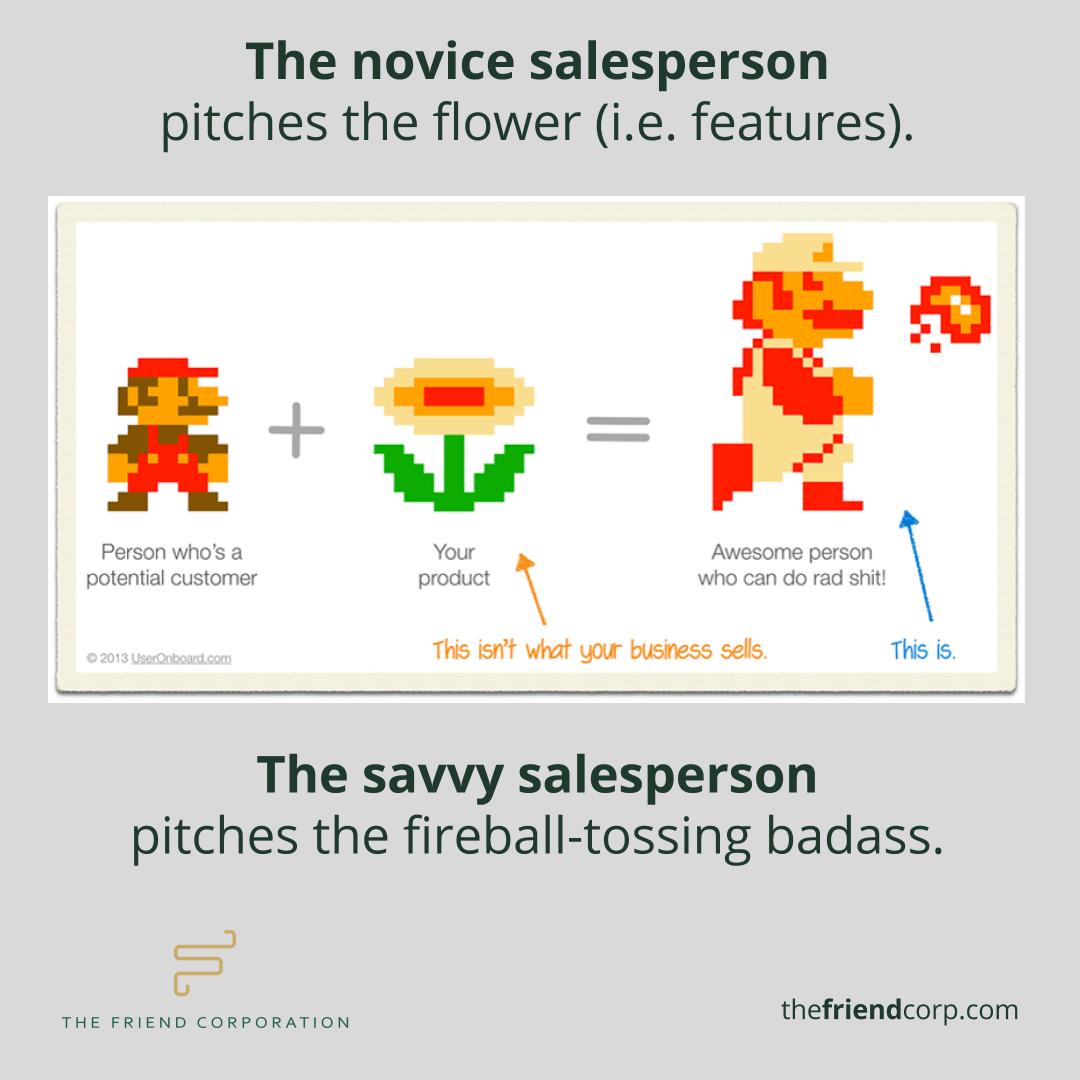
![]()
Definitely my favorite visual to explain the art of sales. Customers aren’t buying the drill — they are buying the hole (that the drill makes). In other words, your customer has a DESIRED OUTCOME, which means you have to get beyond the feature-selling or benefit-listing.
Imagine if you tried to sell Mario the flower. Hey Mario..this flower is better than all the other flowers because it is vitamin rich, organic, blah blah. No!
“Mario this flower is what will turn you into the TOWN HERO. Just imagine what it will be like AFTER you have pillaged the village, slayed all the bad guys, and saved the people. You’ll get recognition, win awards, heck you might even become mayor of the town. All from this flower I am showing you today. I had thought this was aligned with your goals, which is why I am here. Are we on the same page?”
Notice I did not talk about a single feature of the flower. I only talked about the customer’s desired outcome. Your customer has a desired outcome. Figure out what it is and sell that.
Lead Scoring is the Real Deal

![]()
Everyone is looking for the next major hack, the silver bullet, the easy thing they can do to get some immediate results. Let me tell you that this pretty much never happens. It usually takes hundreds of experiments and iterations to finally get that big win. Well, I’ve done those 500 experiments and iterations and am here to tell you that Lead Scoring is the real deal.
Here’s the situation. If you have a company that lacks leads, this post is not for you. You need to focus on lead generation. But if your company is working with a large database of past leads, customers, etc. then you likely have a sales team that has to choose who to call, who is the priority. This is where the productivity gain is seen. Lead scoring uses machine learning allows your team to focus on the prospects that are most likely to close.
We implemented our own machine learning to make this happen. We did a large analysis of our customers and seeded it with approximately 40 characteristics that we felt were critical. This included demographic info, website behavior (what blog posts they read, pricing page visit, testimonials page visit, etc.). We gave points to each of these, we updated every single lead with a lead score, and then we ran reports. 90%+ of all closed deals has a lead score of over 100. So then the solution was simple – get the reps to attack every lead with a score of 100. Ignore the rest, until their score improved, which is the job of marketing.
Here’s the final kicker. We were able to produce the exact same amount of sales, but it only required half the number of reps.
Your Business is a Machine that Produces Outcomes
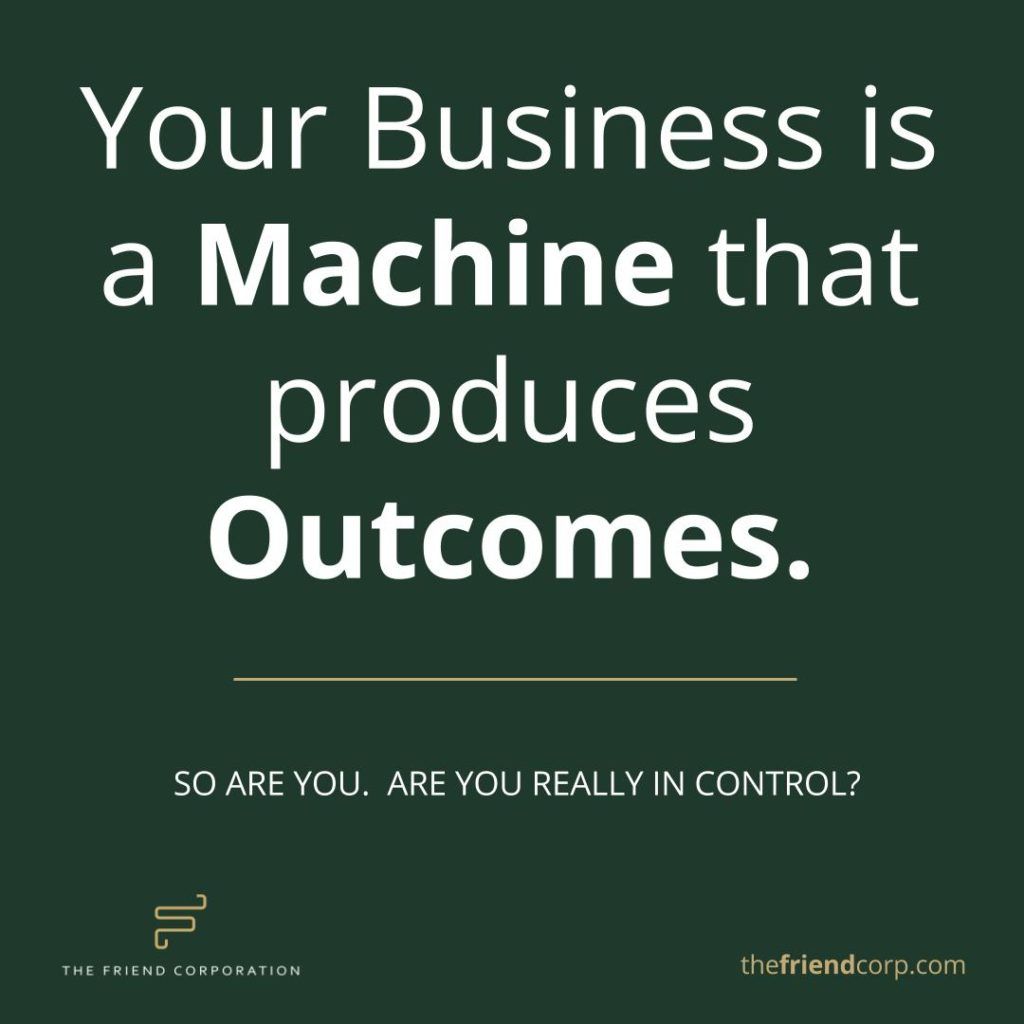
Whether you realize it or not, your personal output today will one based on your biases, assumptions, patterns, and execution. You yourself are a machine that produces outcomes. You can change those outcomes by analyzing the way you do things and think about things and disrupting your patterns. The current state of your machine might be designed to make you poor. Or rich. Or healthy/unhealthy, fulfilled/unfulfilled.
The same goes for your business or wherever you work. The business is a machine, and it produces outcomes based on the way it is managed by leadership in all departments. Each person in the company, all of your current systems and processes define the current state of your machine. The machine should result in the production of happy customers and promoters, among other things. In its current state, is your business designed to do that? Or, what is it designed to produce in its current state….chaos? Mistakes? Bad culture?
Start thinking about your business like a machine that produces outcomes. And then you will realize that your role is to be an engineer every day, continuously improving the machine’s current state.
Only what is Measured will Improve
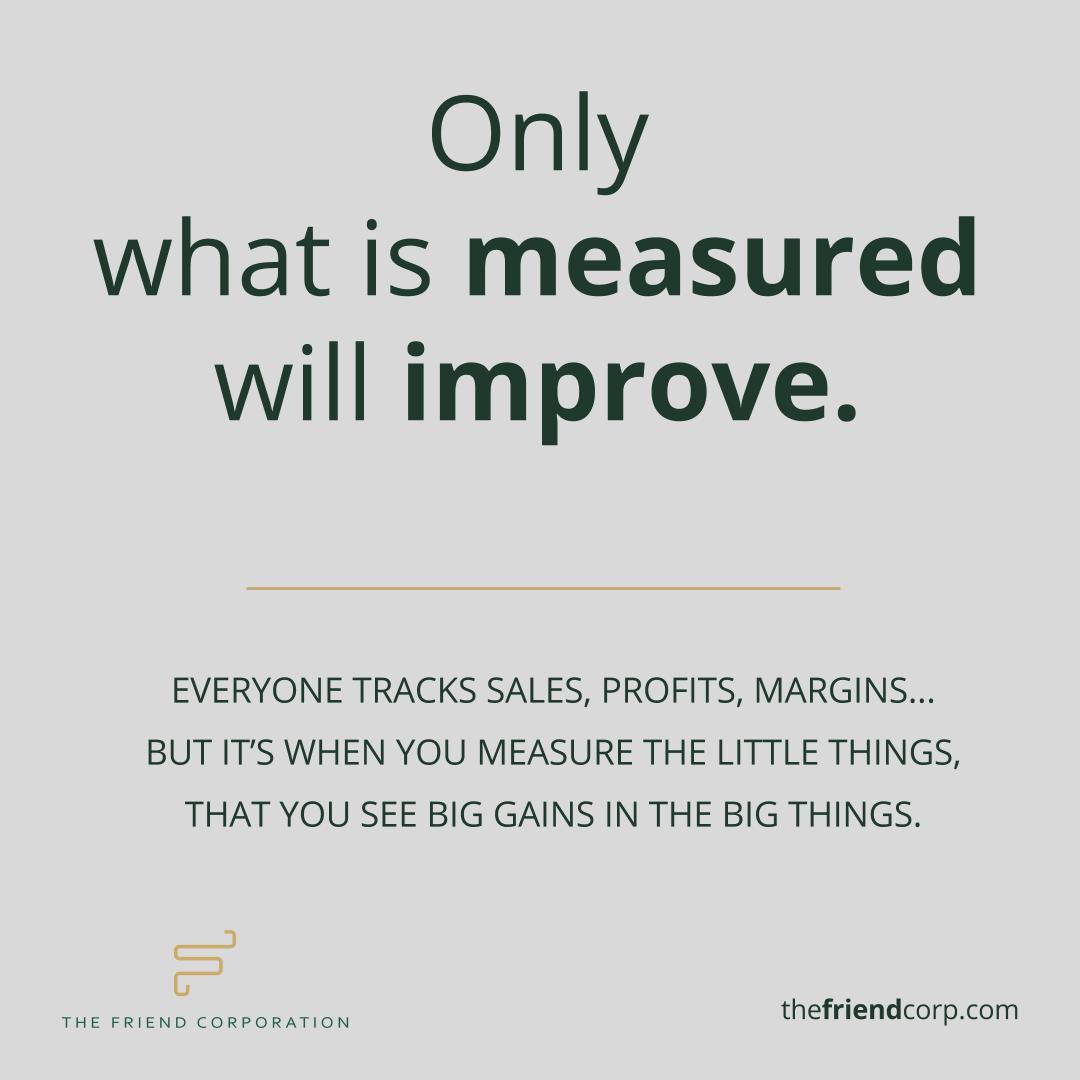
Yes, you probably manage your sales numbers, margins, NPS, and other top-level KPI’s (Key Performance Indicators). But there are always sub-metrics that DRIVE any top-level KPI. I call them supportive KPI’s, and your job as a CEO is to identify them and get measurement reporting in place for them. It’s easy, and once you have done it, you will immediately improve almost any aspect of your business.
For example, in customer satisfaction a top-level KPI you should be using is Net Promoter Score (NPS). But if you go and tell your team to “go improve NPS” they will surely implement things but you will have to wait a long time to find out if those things really worked. Often times, they won’t, and you just wasted a ton of time. What you want to do is identify Supportive KPI’s that can be measured daily/weekly and that are visible to all team members working on it. Some of these I have identified that you should consider — daily/weekly customer satisfaction ratings, the # of positive reviews received as a percentage of support tickets handed, and # of customer referrals received. If you see the Supportive KPI’s improve on a daily/weekly basis, then you can be confident that the top-level KPI will improve and so can your team.
Apply this top-level/Supportive KPI framework to every department and your business, and your business will start rocking. Once you truly identify and measure everything that really matters and you will immediately know whether every department is headed in the right or wrong direction.
Only what is measured will improve.
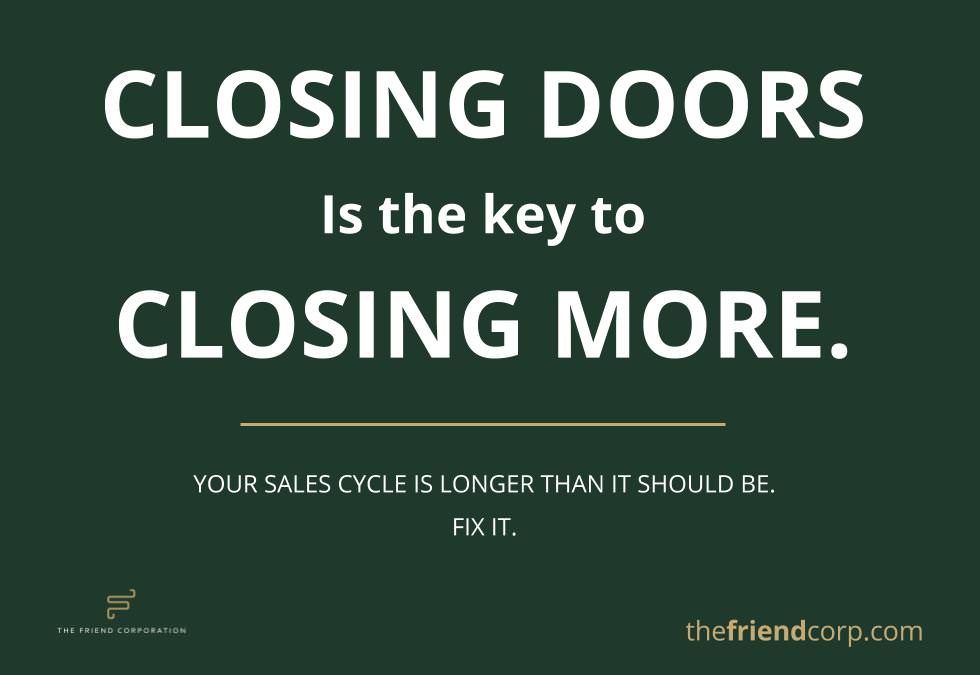
Closing Doors is the Key to Closing More
If you have been selling anything for a year or longer then you should already know every objection, excuse, delay that your prospects will say to you. The way they say it will be different but the responses can usually be grouped into 5-10 core objections.
These objections are open doors. If you don’t close these doors BEFORE they talk about the open door, you already lost. You’ll be delayed, pushed off, etc.
EXAMPLE: It’s December right now which means in most B2B industries, sales are tougher. So when you talk to a prospect, you are expecting to hear “sounds good, call me in January”. You know its coming. To beat this the maximum % of times you need to start the conversation with “So glad we were able to connect, because right now is by far the best time of the year to buy (insert any other key reasons here)…so let’s talk about that deal…”. Beat them to it and slam that door shut. It makes a huge difference.
So get all your objections on paper, write an ideal rebuttal script for each of them, get them to everyone on your sales team, and strategize the timing of each so that you always close ALL the doors before your customer slips out of one!
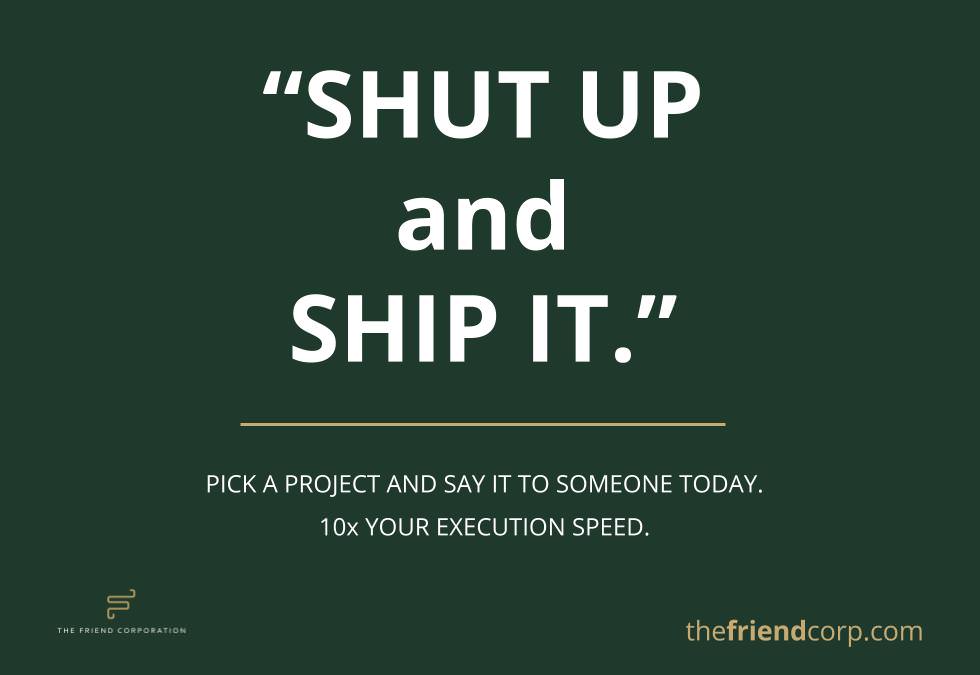
Shut Up and Ship It.
The faster you ship, the more experiments you run, the faster you learn what is working and what is not, the faster you iterate and the faster you get to actually solving a problem for your customer. You don’t know what the customer really wants anyways until you get it out there.
So shut down all the excuses, don’t be a perfectionist and find the fastest way to finish the project you are working on today and just fucking ship it.
The same way we shipped the first version of The Friend Corp website and this Instagram account. They weren’t ready and I didn’t care. I launched and now I’m already learning and adapting.
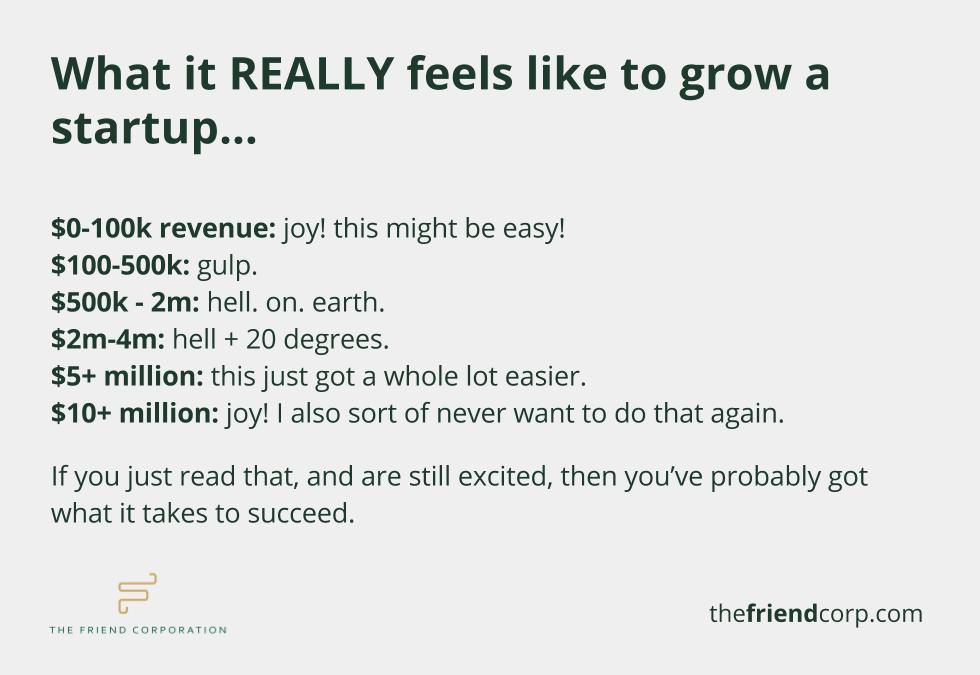
What It Really Feels Like to Grow a Startup
I was asked today what it truthfully feels like for entrepreneurs as your company tries to survive and grow.
Here’s how I responded:
- From $0-100k in revenue: joy! this might even be easy!
- $100k – $500k: gulp.
- $500k – 2 million: Hell. on. earth.
- $2-4 million: Hell + 20 degrees.
- $5+ million: This just got a whole lot easier.
- $10+ million: Joy! I also sort of never want to do that again.
Starting a business that survives has significant rewards in the end, but you also pay a heavy price – whether it succeeds or fails. I’ve been on both sides.
Which is why anyone considering it should really think long and hard about whether you are willing to pay that price.
Because if you read what I wrote above, and you fully understand the realities and you are STILL excited about getting in the game — then my guess is you’ve got what it takes to succeed. If that is you, get up and go for it.
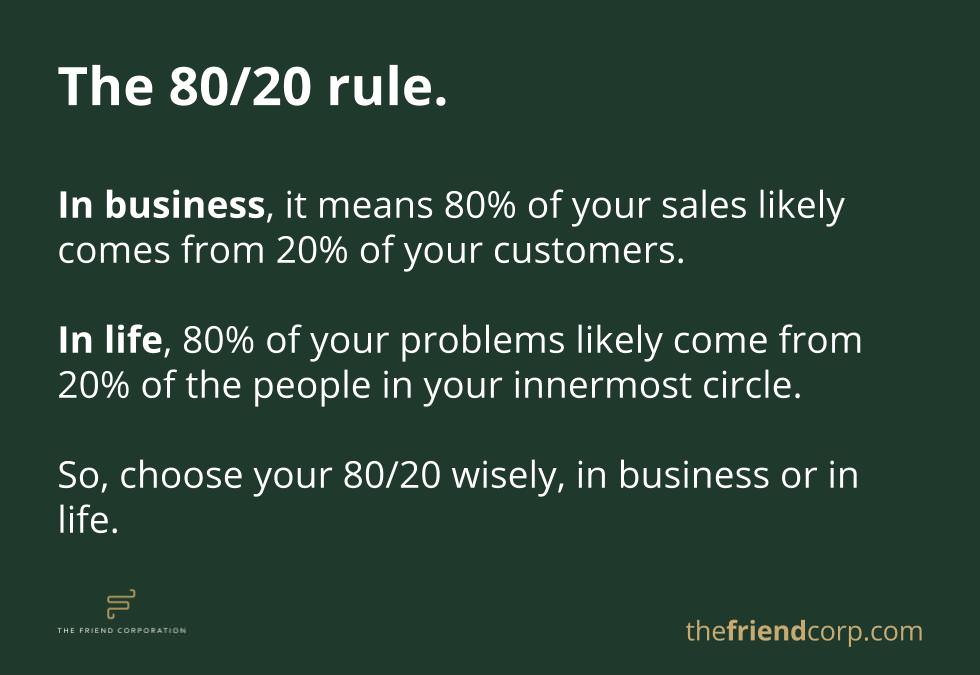
The 80/20 Rule Rant
80/20.
Also called “the Pareto Principle,” it is something I have relied on heavily to build companies but is also applicable to any aspect of life.
In business, 80% of your sales will come from 20% of your customers. 80% of your organization’s effectiveness will come from 20% of your talent.
In life, 80% of your problems will come from 20% of the people in your innermost circle. Likewise, 80% of your happiness will come from 20% of the people in your innermost circle.
Choose your 80/20 wisely, in business or in life. It will make a big difference.
Who this Blog is for, What We are Doing & Why
The main purpose of this blog will be to help entrepreneurs who are growing companies between $0 and $5 million in revenue. It is something I have done for years now in my daily life, and its time to make it accessible to others.
There are a few reasons we are focusing on this stage in the journey:
I’m going to start with very short posts mainly delivered on social media. My time is extremely limited and I’m going to try shit before I invest a bunch of time doing the wrong thing. So we’re going to start by delivering nuggets of value in as many areas as possible and let the market tell me what it wants and adjust.
You may see a long form post here or there if I need to get into details about specific sales, marketing, software development, culture building, or any other relevant early stage tactics that are really damn good and need to be discussed.
You also learn a lot about other aspects of life when running and growing companies. Family, marriage, parenthood, and friendships are all impacted. It’s part of the deal. So we will talk about that too and wax philosophical from time to time.
We’ll know we are going in the right direction by the feedback we receive. The goal is to provide value and help people as much as possible on their journey.
If you like where we are headed with this, I suggest following me on Instagram and Twitter.